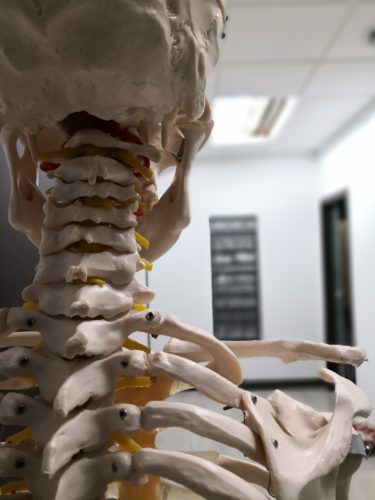Why do people turn to alternative medicine? Reams have been written on the subject but it seems to boil down to a few key factors: patients want to be seen as more than a collection of symptoms and want to feel in control of their care, particularly when dealing with chronic conditions. The focus on “evidence-based medicine”, while one skeptics understandably enthusiastically support, can often have an unfortunate side-effect of forgetting about the patient, “devaluing” their agenda in comparison to the agendas of researchers and practitioners. Patients want to feel seen and heard, to be treated individually and holistically in a way that allows them to form an “alliance” with their doctors to improve their wellbeing.
As a society, we assume that alternative practitioners provide these individualised, holistic, treatments because it’s what such practitioners are constantly telling us. But do they? As skeptics we are unlikely to be in a position to compare conventional and complementary treatments, but last year I had cause to take the plunge and enter the world of chiropractic. My sister had been suffering from severe back pain and her doctor had been less than helpful – they had been stereotypically dismissive of her pain and the huge negative impact it was having on her health and wellbeing. In desperation she turned to a local chiropractor and my skeptical alarm sounded. I didn’t know much about chiropractic beyond what I learned during the now-infamous libel case between Simon Singh and the British Chiropractic Association (BCA) back in 2010.
In an article outlining the many risks and dangers associated with chiropractic, Singh wrote that the BCA “happily promotes bogus treatments” – the BCA took exception to Singh’s article, and sued him for libel, withdrawing the case after a judge ruled that Singh’s words were fair comment. I knew that chiropractic manipulation has been the cause of strokes and has even led to death , but I also knew that my sister would just roll her eyes at me if I started on a diatribe against it. So I took a different tack.

Instead, I visited the same chiropractic clinic. I was given an assessment lasting half an hour (far longer than I’ve ever got from an NHS doctor), was invited to a free half-hour talk, and then had another half-hour session where we went through my ‘report’ and discussed treatment options. It was all very welcoming and seemed to be doing everything that alternative medicine promises – it provided long appointments that gave me the opportunity to discuss all my problems rather than rush through them; I was invited to talks to further inform me about the background to chiropractic; and I was given a personalised report and treatment plan.
While there is much that can be said about all the steps on this process (and I have), I want to focus here on the supposedly individualised nature of all of this. From my experience at the clinic, and the subsequent free “spinal check-up” I attended recently, the individualised nature of these treatments are massively overstated. It was this fact, more than anything else I discussed, that helped convince my sister not to waste her hard-earned money on these treatments, and I want to explain how this worked in the hopes of helping others.
My sister visited the chiropractor for debilitating back and leg pain (later diagnosed as sciatica) that left her in agonised tears. I visited as a “birthday treat”. I had a few aches and pains – a dead arm in the mornings and generalised stiffness – but nothing too major and nothing that I couldn’t live with. We had two very different sets of symptoms, with two very different levels of impact on our lives. Yet despite this, when comparing notes we discovered we had exactly the same series of tests and were provided with exactly the same treatment plan. When I went back recently my original aches and pains had disappeared, to be replaced by some new ones (oh the joys of middle age!), yet I was given the exact same set of tests and offered the exact same treatment plan.
In fact, the treatment plan is so generic that the company offers payment plans built around it. You can bulk-purchase 12 or 24 sessions at a time, each lasting 15 minutes, although it was emphasised that only a small portion of this would be active treatment, the rest was for “relaxation”.

Chiropractic likes to compare itself to dentistry. The comparison was even made in the talk I attended, and it can be found on chiropractic websites all over the internet. It is the result of a model proposed in 2005 to enable “the chiropractic profession to establish cultural authority and increase market share of the public seeking chiropractic care”. The aim is to make people see going to the chiropractor as something routine and regular. The most obvious difference between dentists and chiropractors is that dentists only expect you to visit once a year if you have no concerns, whereas chiropractors expect much more frequent visits.
But the comparison fails even more when you look at the supposed ‘individualised’ treatments for problems. If I went to the dentist with a superficially chipped tooth I’d expect a very different treatment plan than if I had periodontitis. This simply does not happen with chiropractic: it doesn’t matter if you’ve merely over-exerted yourself in the garden or if you have slipped a disc, the treatment plan is the same – see them twice a week for three months, then reassess and move to once a week or a fortnight for another three months and reassess again. This is not remotely individualised, and simply would not fly in any legitimate health intervention.
My aches and pains got better. The NHS doctor said I had carpal tunnel and would most likely sort itself out; they were right. My sister’s back (fortunately) has also got better. Sciatica often does. Had we followed the advice of the chiropractor, both of us could have spent hundreds on treatment that would have appeared effective because we got better, even though we got better anyway. Chiropractic relies on this regression to the mean, and takes credit for it. But more than that it claims to be individualised while giving the most generic and impersonal treatment I’ve ever received from a medical practitioner. I was seen as nothing more than the nerves in my back, all of which were just waiting to cause me problems. It was not holistic, I was not ‘seen and heard’, and the only result, had I pursued treatment, would not have been reduced pain but a reduced bank balance.



